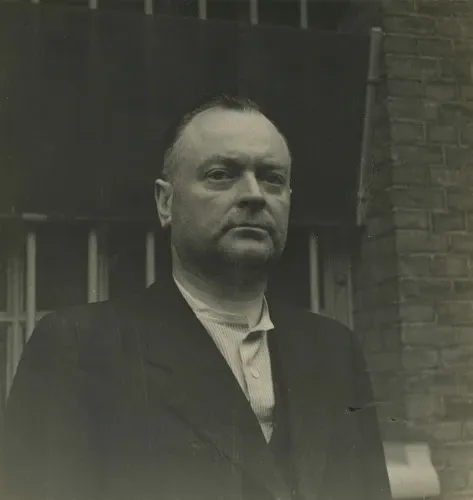Locations
3193 to 3216 of 5415 results
-
Velthuijsje
Velthuijsje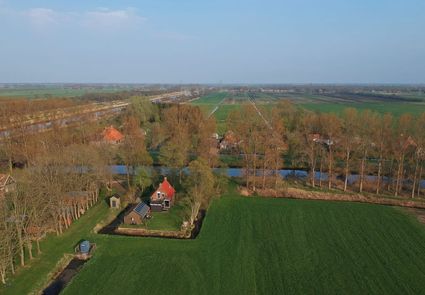 Munnekeburen
Munnekeburen
from your location
-
d'Oude Herbergh - Vakantiewoning de Jonge Jelle
d'Oude Herbergh - Vakantiewoning de Jonge Jelle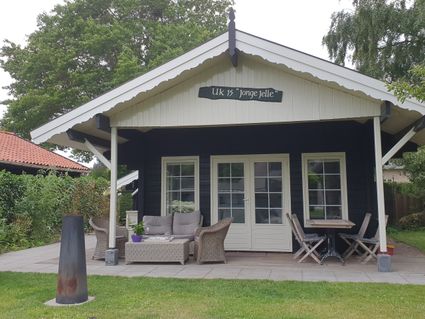 Terherne
Terherne
Direct boekbaar
from your location
-
Liuwedaem
Liuwedaem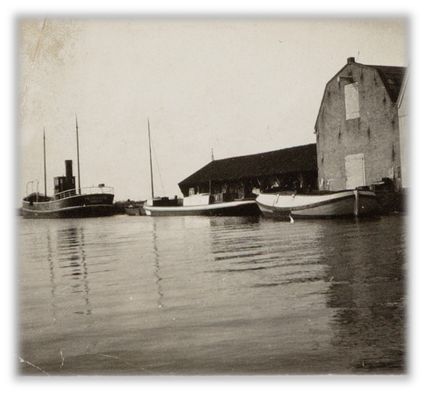 Gaastmeer
Gaastmeer
from your location
-
Wyns
Wyns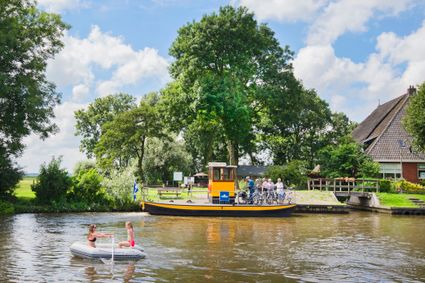 Wyns
Wyns
from your location
-
Dronken van de drank van Mussert
Dronken van de drank van Mussert
De ophanden zijnde bevrijding brengt een enorme verplaatsing van nazi-sympathisanten op gang. Uit angst voor een ‘bijltjesdag’ zoeken collaborateurs een veilig heenkomen. Zo krijgt het dorpje Zurich bezoek van NSB-leider Anton Mussert, die onderweg is naar de Afsluitdijk.
Met de bevrijding in aantocht maken tienduizenden Duitse militairen, nationaal-socialisten en hun Nederlandse sympathisanten zich grote zorgen over hun lot. Wat zal er met hen gebeuren, nu een Duitse nederlaag onvermijdelijk lijkt?
Vluchten richting ‘Heimat’ lijkt de beste optie, maar de Geallieerden stoten zo snel door richting het noorden dat Duitsland voor velen onbereikbaar wordt. Dan maar naar het nog bezette westen van Nederland en daar het verdere verloop van de oorlog afwachten.
In de laatste dagen voor de bevrijding ziet Friesland vele vluchtende collaborateurs voorbij komen, waaronder beruchte oorlogsmisdadigers. Ze proberen weg te komen met de boten in Lemmer of Stavoren, of met auto’s via de Afsluitdijk.
In de chaos van de laatste oorlogsweken krijgt het dorpje Zurich, onder de rook van Harlingen, bezoek van een stoet luxe auto’s. Zo’n twaalf mannen, twee vrouwen en twee kleine meisjes stappen uit. “Kunt u hier vandaag mijn gezelschap onderhouden?”, vraagt een van de mannen aan de cafébaas. “We willen vanavond doorreizen over de Afsluitdijk”. Het is NSB-leider Anton Mussert, die daarvoor van zijn landgoed uit Almelo is gekomen.
De auto die ze meebrengen bevat een ruime drankvoorraad. Het gezelschap is al gauw beneveld en belandt al lallend op de zeedijk. De NSB-ers maken een indruk alsof het ze allemaal niets meer kan schelen. Er wordt gescholden. De twintigjarige dochter van de cafébaas is er getuige van. “Wil je niet voor me in de houding, klootzak!”, roept iemand tegen een collega. Een van de vrouwen zegt: “Mijn man wou hoog, hij komt hoog te hangen”.
De NSB-ers zijn echter niet de enigen die van de drank hebben geproefd. De drankauto is door de dorpsbewoners aan een nauwkeurig onderzoek onderworpen. Een van hen zegt: ‘Ik bin dronken fan Mussert syn drank”, waarna hij in bed wordt gelegd. De volgende dag rijdt het gezelschap verder, richting Afsluitdijk.
Waddeneilanden
Ook de Waddeneilanden worden een toevluchtsoord voor collaborateurs. Daar zijn nog veel Duitse militairen en men hoopt van hieruit misschien op een andere manier geëvacueerd te kunnen worden. Het personeel van het beruchte Scholtenhuis, het SD-hoofdkwartier in Groningen, belandt bijvoorbeeld op Schiermonnikoog, waar het nog tot 11 juni duurt voor de laatste Duitse militairen zullen vertrekken.
Florentine Rost van Tonningen-Heubel, de vrouw van NSB-kopstuk Meinoud Rost van Tonningen, vlucht hoogzwanger naar Terschelling. ‘De zwarte weduwe’, zelf ook berucht omdat ze na de oorlog nooit afstand neemt van het nationaalsocialisme, bevalt op 28 april in het dorpje Midsland van een zoon. De bevalling zorgt voor veel opwinding, want als de eilanders erachter komen dat er in hun dorp een Rost van Tonningen is geboren, ontstaat er een kleine volksoploop. Maar uiteindelijk loopt alles met een sisser af.
 Zurich
Zurich
from your location
-
-
Loft in Koudum
Loft in Koudum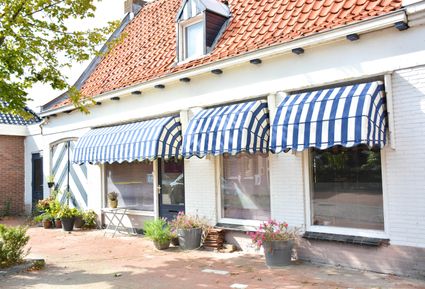 Koudum
Koudum
from your location
-
Execution of ten Dutch collaborators near Oldeberkoop
Execution of ten Dutch collaborators near Oldeberkoop
On the afternoon of 12 April, Oldeberkoop was liberated by "D" Squadron of the Royal Canadian Dragoons. Later that day, they established a temporary headquarters in the village. The movements of "D" squadron were coordinated from the headquarters. This was also the place where prisoner of war from the immediate surroundings were gathered.
These prisoners of war were often Germans, but sometimes also Dutch who served voluntarily in the Waffen-SS, the NSKK (a paramilitary section of the Nazi party NSDAP) or the Dutch Landwacht. On this 12th of April, ten of these collaborators were brought into the encampment in Oldeberkoop amid great interest. Hatred of people who fought with or for the Germans was strong among most of the Dutch population. A resident of Oldeberkoop described the moment the men were brought in:
"The crowd booed and whistled, some spat, and some could not keep their hands off them. One of them got such a blow to the head that hit made his head spin."Not much later, these POWs were taken away again. Presumably with the aim of taking them to a real prison camp in Vledder. But the men would never get there. All ten of them were shot without trial in the Koepelbos just outside Oldeberkoop.
It was long thought that the Canadians were responsible for these unlawful executions. But by 1995, it became clear that Canadian involvement had been minimal. Stories about the involvement of two former resistance fighters were confirmed when one of them confessed to having fired the shots. In addition to himself, a colleague, a Canadian driver and some men who had dug the graves were present at the execution.
The exact reason for the murder of the Dutch collaborators and the exact role of the two Dutchmen and the Canadian have never been fully clarified. There are different accounts of the events leading up to the shooting. On 14 April, the bodies were finally buried in a mass grave on the side of the road. Later they were transferred to the German war cemetery in Ysselsteyn. The names of most of the victims also became known at that time:
Egbert Jan Hommes, Ordnungspolizei
Otto Frikken, Ordnungspolizei
Gerrit Jan Seevinck, Dutch Landwacht
Hendrik Dales, Dutch Landwacht
Heike Ham, Dutch Landwacht
Douwe Jonkman, Dutch Landwacht
Bernard Janssen, Dutch Landwacht
Arnold Pieter Post, Dutch Landwacht
The identities of two men from the Dutch Landwacht could not yet be ascertained.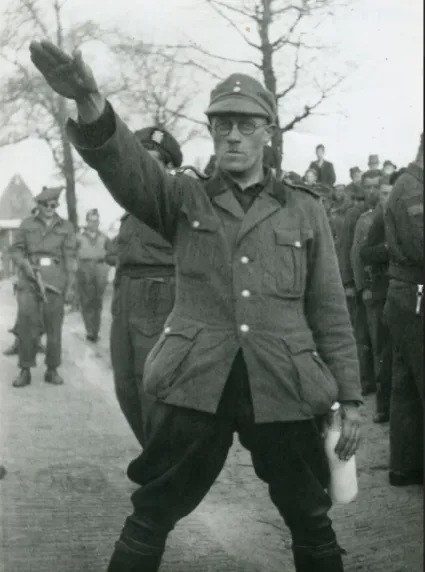 Oldeberkoop
Oldeberkoop
from your location
-
-
B&B De Spelthoeve
B&B De Spelthoeve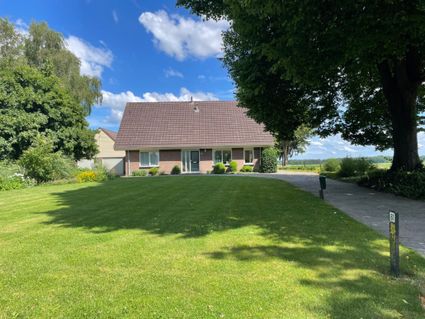 Elsloo
Elsloo
from your location
-
Nynke's Pleats
Nynke's Pleats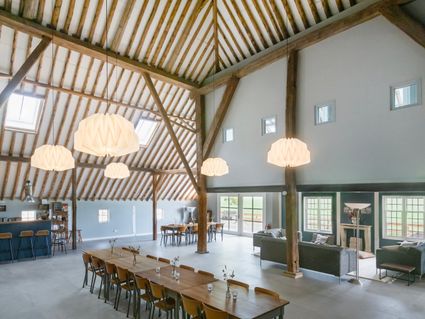 Piaam
Piaam
Direct boekbaar
from your location
-
H. Franciscuskerk
H. Franciscuskerk Wolvega
Wolvega
from your location
-
Sint-Andreaskerk Wijnaldum
Sint-Andreaskerk Wijnaldum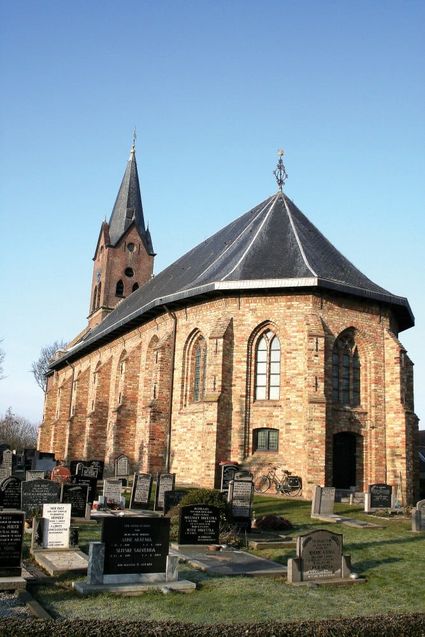 Wijnaldum
Wijnaldum
from your location
-
Biologische kaas handelaar
Biologische kaas handelaar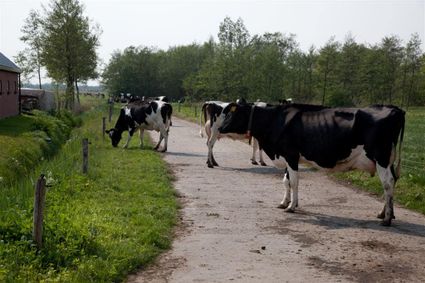 Leeuwarden
Leeuwarden
from your location
-
Stal4
Stal4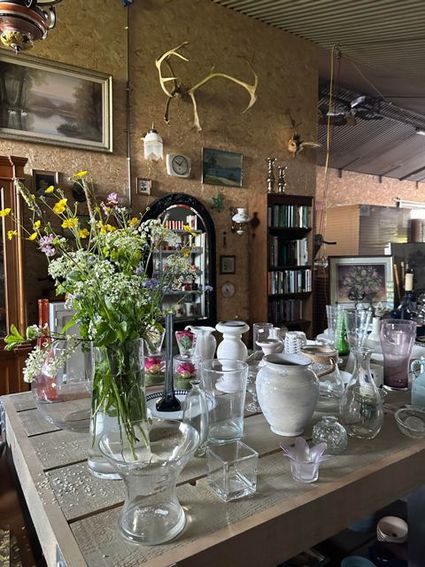 Sondel
Sondel
from your location
-
Piaam State
Piaam State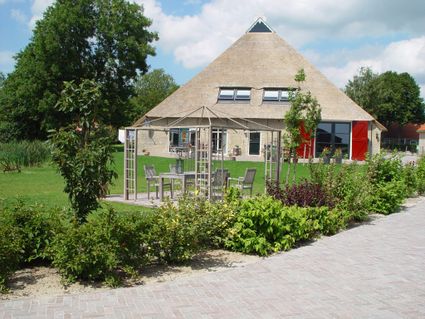 Piaam
Piaam
from your location
-
De Boer Tweewielers Burgum
De Boer Tweewielers Burgum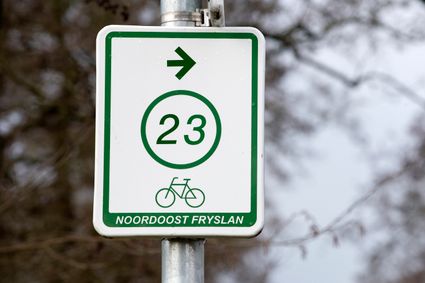 Burgum
Burgum
from your location
-
Melktap Noordzigt
Melktap Noordzigt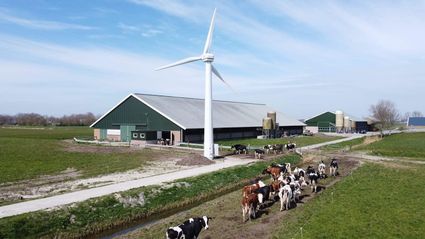 Sint Jacobiparochie
Sint Jacobiparochie
from your location
-
Veerpont Jacob Petrus (Dronrijp Dykshoek)
Veerpont Jacob Petrus (Dronrijp Dykshoek) Keimpetille
Keimpetille
from your location
-
Vergaderplakje
Vergaderplakje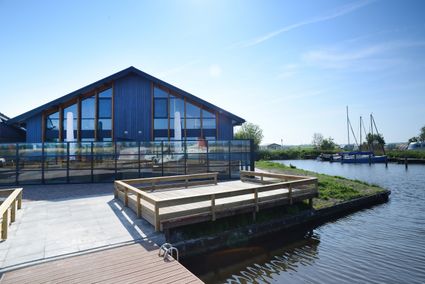 Gaastmeer
Gaastmeer
from your location
-
TOP Dronryp
TOP Dronryp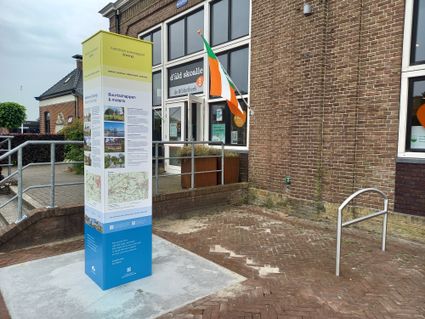 Dronryp
Dronryp
from your location
-
The battle for the Tjonger bridge in Mildam
The battle for the Tjonger bridge in Mildam
In the afternoon of 12 April, rumours had reached Mildam that Englishmen or perhaps Canadians had been sighted at Peperga. The Canadian vanguards had entered Friesland. For the inhabitants of Mildam it was still a surprise when at first one and shortly afterwards another military vehicle with a few men in khaki-coloured overalls stopped at the bridge.
These vehicles were part of a patrol of "D" Squadron Royal Canadian Dragoons commanded by Lieutenant Homer Thomas. These Canadians established that unlike other bridges, the bridge in Mildam over the Tjonger had not yet been blown up by the occupying forces. The fact that the Tjonger bridge in Mildam had not been destroyed was due to the local resistance movement. The Germans had indeed planned to blow up this bridge as well. But at the risk of their own lives, resistance fighters had removed the detonators from the explosives affixed to the bridge.
The Squadron Commander immediately ordered all units to secure the bridge. And the Dutch Domestic Armed Forces were also requested to provide men. The precautions turned out to be justified. In the night of 12 to 13 April, German troops launched one of their few counter-attacks in the province of Friesland. From Heerenveen, they managed to surprise the Canadians in Mildam. They tried to regain control of the bridge three times. During the fierce fighting, Canadian vehicles were knocked out. But the Dragoons stood firm, and the Germans were driven off again. Mildam was freed.Four Canadian soldiers were injured in the fighting. The number of casualties on the German side is unknown. There was property damage in Mildam, but no civilians were killed. With a little less luck, though, there would have been several Dutch casualties. In the early morning of 13 April, a group of dozens of resistance fighters approached the bridge at dusk from the direction of Nieuweschoot. This was the reinforcement requested by the Canadians on 12 April when the undamaged bridge was discovered. The resistance fighters were partly carrying captured German weapons and were not noticed by the Dragoons in the semi-darkness until late.
Lieutenant Thomas, mentioned earlier, almost gave the order to open fire. It was only at the last moment that it became clear that they were not Germans. The resistance members had managed to make themselves known by singing songs in English.
The preservation of the bridge was important. During the following days, the Canadians would make extensive use of the bridge to advance further in the direction of Leeuwarden and liberate the province of Friesland.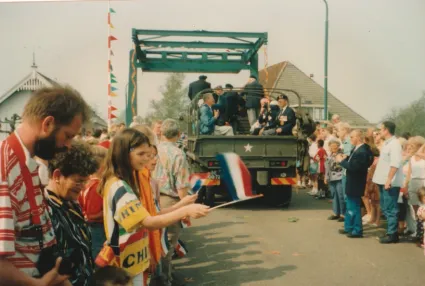 Mildam
Mildam
from your location
-
-
Groepsaccommodatie Cleyn Alserd
Groepsaccommodatie Cleyn Alserd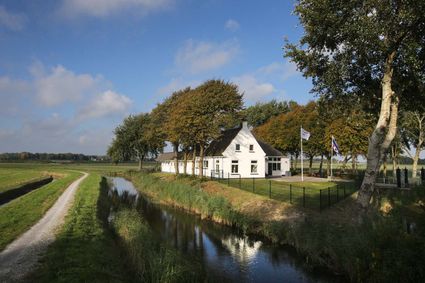 Ingelum
Ingelum
from your location
-
Punt Piaam
Punt Piaam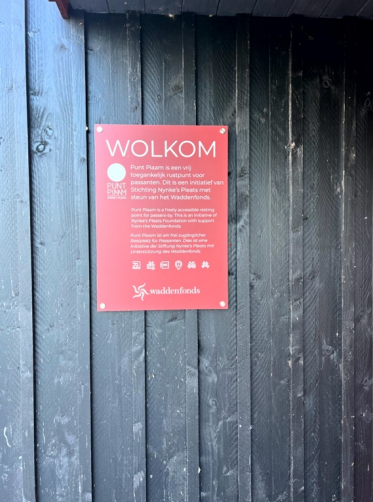 Piaam
Piaam
from your location
-
Heide Hulstreed
Heide Hulstreed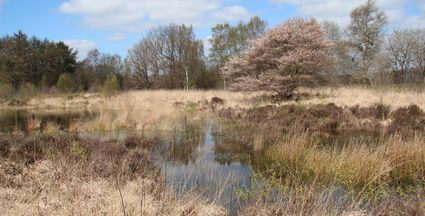 Jubbega
Jubbega
from your location
-
Strandje Doniaga
Strandje Doniaga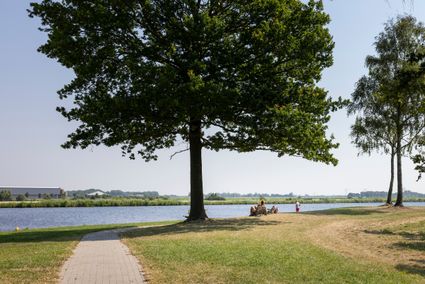 Doniaga
Doniaga
from your location
